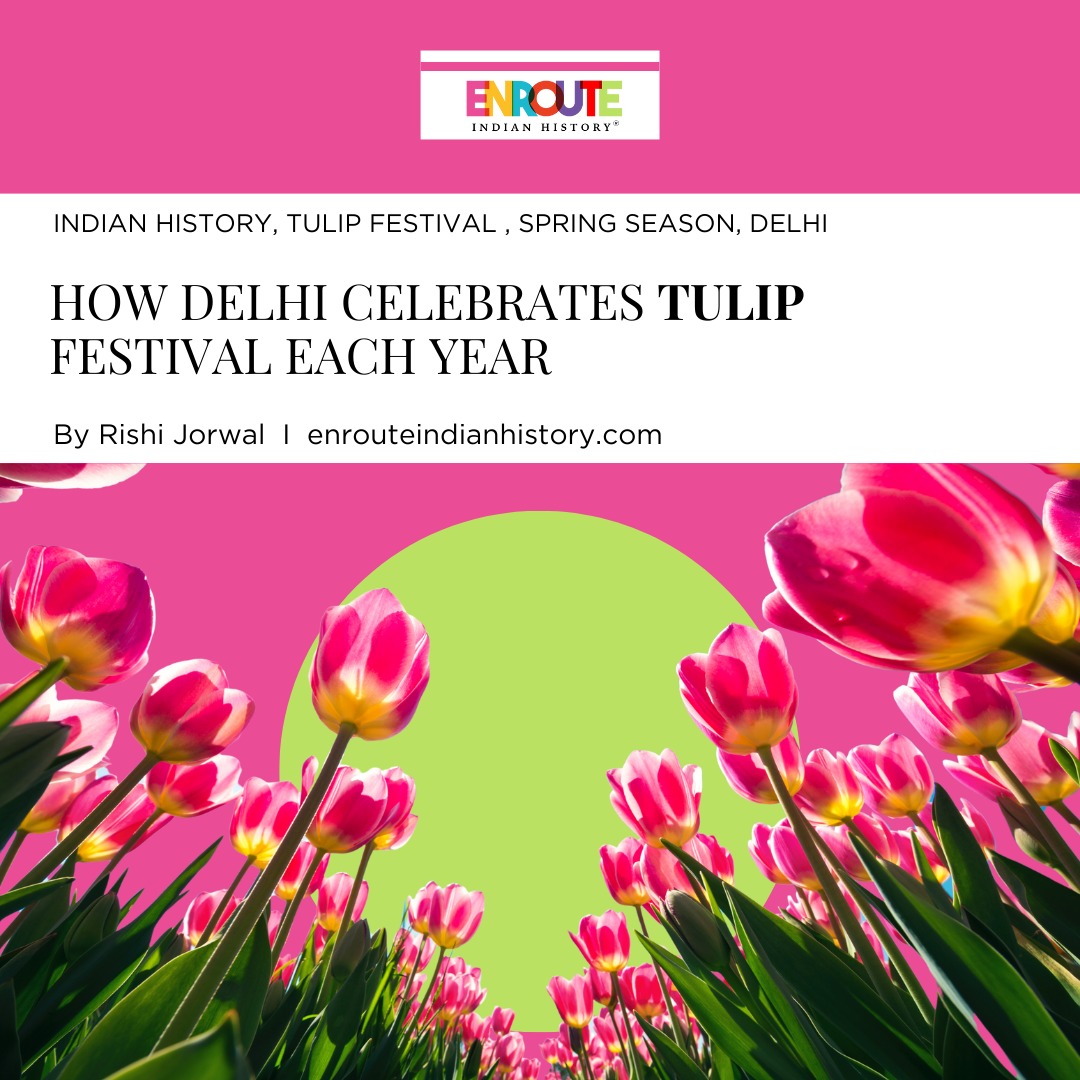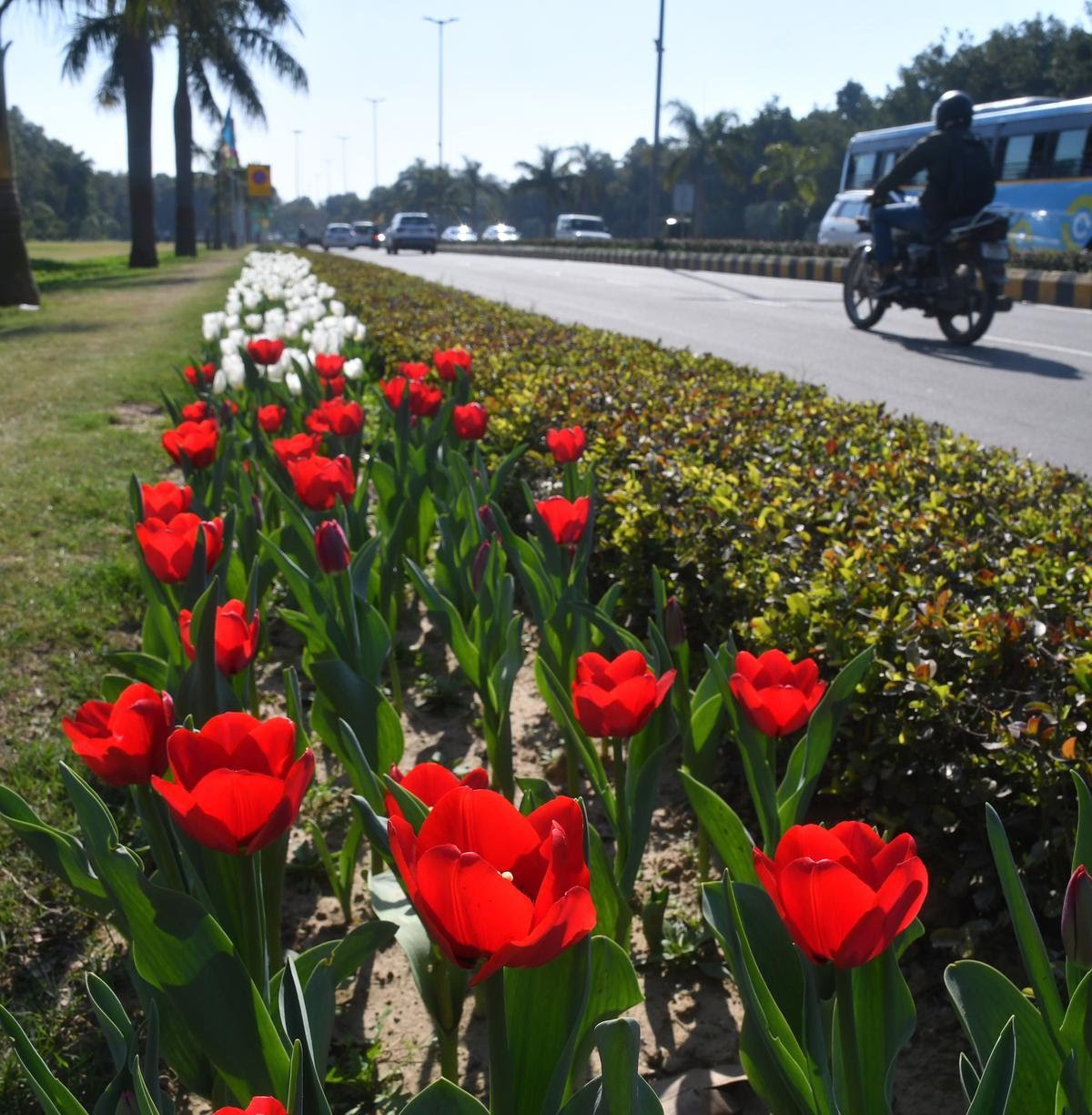
Waiting for Spring
Every year, the month of February, the onset of spring in the subcontinent marks the filling of all the newspapers with a headline about the limited time blooming of a flower, Tulip. The headlines prove to be worth it, thousands of people visit the gardens and sanctuaries just to have a look at this one species of flower, since they won’t get to see it again for the rest of the year. In this article we shall see what is so special about Tulips, How the excitement about this flower in particular is nothing new in the Indian history, and concluding it all with the recent tulip festival in Delhi.
‘Mughal’ Tulips
‘KASHMIR JANNAT NAZIR’ , ‘SUBA I DIL PAZEER’, these two are one of the many poems written in the praise of Kashmir. Literally meaning, ‘Kashmir that paradise like’ and ‘a province that is close to my heart’, the two show the importance given to the province under the Mughals (Maurya, 2017). Kashmir, which today houses the biggest tulip garden in Asia that is the Indira Gandhi Memorial Tulip Garden (srinagar.nic.in)
Works Cited
(n.d.). Retrieved march 6, 2024, from srinagar.nic.in: https://srinagar.nic.in/tourist-place/tulip-garden/
Brunt, W. (1948, february). The Mughal painters of Natural history. the burlington magazine. the Burlington Magazine Publication Ltd.
Chand, A. (2019). Dara Shukoh :The Mam Who Would Be King. Harper collins publishers India .
mahajan, s. (2024). how 3 lakh tulipsbloomed in Delhi. Delhi: the Hindu.
Maurya, A. (2017, April 15). Of tulips and daffodils : Kashmir Jannat Nazir as a political landscape. Economis and political Weekly, pp. 37-44.
(srinagar.nic.in), was brought into the Mughal rule in 1586, after the conquest of Srinagar, but under the later emperors it was not just province located in the northern most border of the territory which required special attention for security reasons. It was rather a province praised for its beauty, its cold and tender air and scenic aesthetics. The Emperors would often visit the mountainous yet comforting place, especially in the cases of sickness, for instance Jahangir would visit the gardens and palaces during the last years of his reign due to weak health (Chand, 2019). However, his ancestor didn’t like it that much. Babur, who is often praised for his interest and rather love for the nature which he showcased by introducing beautiful and intricate Persian style gardens into the subcontinent, was not equally in love with Kashmir. He, in his memoirs, describes and prefers the beauty of his homeland, Ferghana. Such a bias is obvious. One day, he collected around thirty different species of flowers, one of them being a Tulip (Brunt, 1948). This is considered to be the story of how a flower native to Persia, reached our home. Coming back to Babur, the first Mughal emperor was highly disappointed by the lack of what he considered to be beautiful gardens when he reached and explored his newly conquered territory. Hence, he took up the burden to design those and leave it for us to gaze at. He designed his gardens on the basis of mystical Islamic text. The idea of Charbagh divided by pathways and water channels is inspired from the description of paradise which is a beautiful garden, and is provided with four rivers which are represented the water channels in the Mughal style of gardens. Such gardens are present the Taj Mahal and the Humayun’s Tomb Located in Delhi, the city where the present day tulip festival was conducted which we will discuss now.
Delhi’s Tulip Festival

Tulips in the afternoon
The National Capital is a living breathing city there is no doubt about that. Recently the New Delhi Municipal Corporation (NDMC) organised a tulip festival on the Shanti Path near Chanakyapuri. With full preparations and zestfulness the garden was made accessible to the public. According to reports from the Hindu, around 3 lakh tulips were imported from Netherlands and were taken care of for almost 3 months just for them to bloom in the span of these few weeks of spring. The gardeners were especially trained so that they could look after the flowers and prepare them for the exhibition since the flower are not indigenous to the city as discussed before. Costing around 30 rupees each, preparing 3 lakh flowers was surely an expensive affair. This in turn requires protecting them too. For this 3 security guards are hired to look after the area and ensuring noone damages the plants or tries to pluck out the tulip bulbs. The impeccably beautiful flowers are present in White, Black, Yellow, Yellow-red, Pink, Orange, Purple. With the exhibition, a competition was also organised by the NDMC for the photography enthusiasts, everyday the NDMC would post few brilliant clicks of the flowers and by the closing of exhibition they’ll choose the best one and declare the winner. All of this is being done under the name of ‘City of joy, City of flowers’, a promise made by Lieutenant Governor V.K. Saxena when he took charge. (mahajan, 2024)
From the tales of emperors in the medieval times to a season being treated as a festival by the common folks, the landmass has seen it all and Tulips have somewhat been part of all this. No one knows if Babur would have thought this will be considered as his legacy, along with establishing a kingdom that would rule almost all of the subcontinent. Flowers being a metaphor for beauty and delicacy, symbol of love as well as worship that too across faiths have always been big and under appreciated part of our lives. Events and festivals like these are the times when we realize this, and get mesmerized by what we see almost everyday, but don’t notice often.
SOURCES
Works Cited
Brunt, W. (1948, february). The Mughal painters of Natural history. the burlington magazine. the Burlington Magazine Publication Ltd.
Chand, A. (2019). Dara Shukoh :The Mam Who Would Be King. Harper collins publishers India .
mahajan, s. (2024). how 3 lakh tulipsbloomed in Delhi. Delhi: the Hindu.
Maurya, A. (2017, April 15). Of tulips and daffodils : Kashmir Jannat Nazir as a political landscape. Economis and political Weekly, pp. 37-44.
Image – 3 lake tulips bloom in Delhi
https://www-thehindu-com.cdn.ampproject.org/v/s/www.thehindu.com/news/cities/Delhi/how-3-lakh-tulips-bloomed-in-delhi/article67882207.ece/amp/?amp_gsa=1&_js_v=a9&usqp=mq331AQIUAKwASCAAgM%3D#amp_tf=From%20%251%24s&aoh=17095783949273&referrer=https%3A%2F%2Fwww.google.com&share=https%3A%2F%2Fwww.thehindu.com%2Fnews%2Fcities%2FDelhi%2Fhow-3-lakh-tulips-bloomed-in-delhi%2Farticle67882207.ece



















